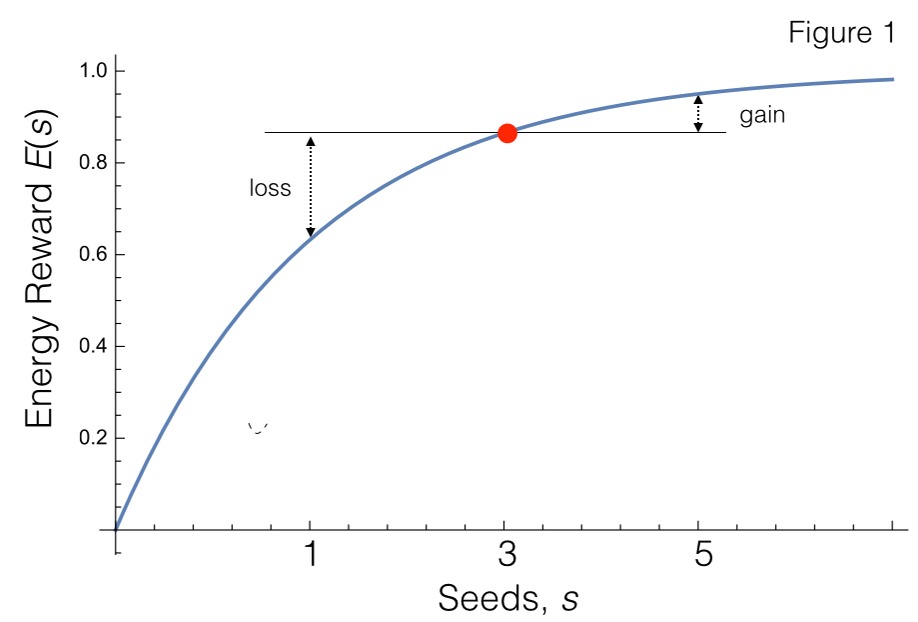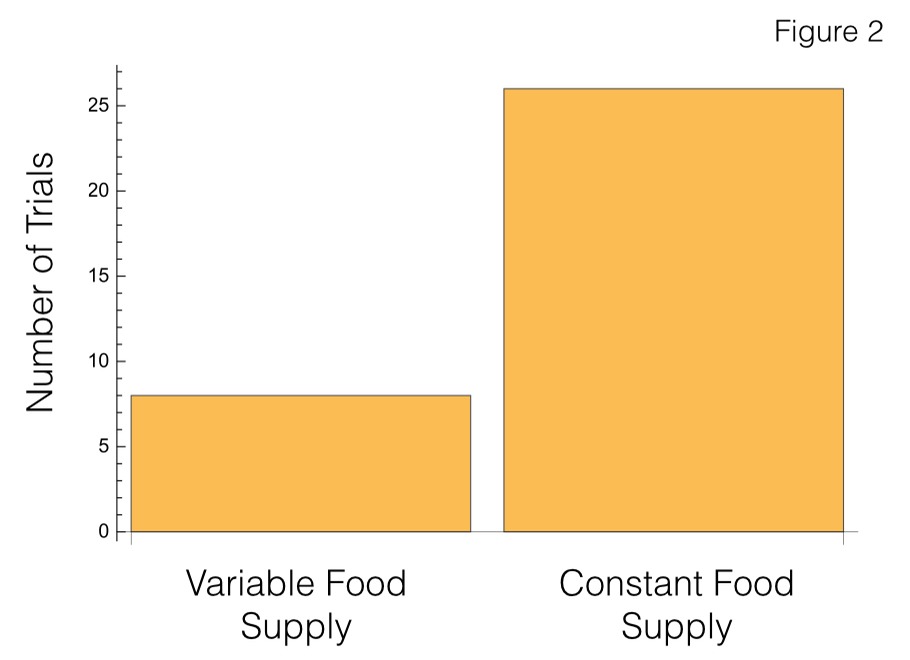The term ‘risk aversion’ in Example 4.2.6 of the textbook refers to the preference for actions with a fixed payoff as opposed to actions with a variable payoff, even if the variable option sometimes yields a larger reward. For example, we showed that juncos should prefer a constant food supply of 3 seeds per unit area as opposed to a variable food supply that sometimes yields 5 seeds per unit area and sometimes just 1.
We saw in this example that the concavity of the energy reward function E(s) played a critical role in our analysis. Another way to understand why juncos should be risk averse is to consider how the energy reward would change if an individual switched from a constant food supply to a variable food supply. Figure 1 shows that sometimes the individual’s reward would be higher (namely when it experiences 5 seeds per unit area) and sometimes it would be lower (when it experiences 1 seed per unit area). Because of the concavity of the reward function E(s), however, the gain that the bird gets when feeding on 5 seeds per unit area (as compared with the constant food supply) is smaller than the loss that they incur when feeding on 1 seed per unit area.

The predictions from Example 4.2.6 have been tested by first measuring the energy reward function and demonstrating that it is indeed concave downward. Researchers then offered the juncos a choice between a constant food supply and a variable one (Caraco 1981). Figure 2 shows that, out of 34 trials, birds tended to prefer the constant food supply in 26 of them.

References
Caraco, T. 1981. Energy budgets, risk and foraging preferences in Dark-Eyed Juncos (Junco hyemalis). Behavioral Ecology and Sociabiology 8:213-217